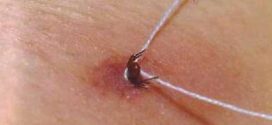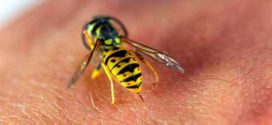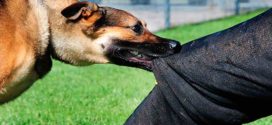It doesn't matter how often you go camping - once a year or you can't imagine your life without trips to nature at all and do it regularly, you should take care of having a hiking first aid kit. From this article, you will learn how to properly assemble a first aid kit for a hike and what necessary medicines you will need to complete it.
In nature, anything can happen to you, you can get a cut, get injured when you fall or catch a cold - in any case, you should always be ready for this and be fully armed. Not so long ago we wrote about how to assemble a survival kit , now we want to tell you more about the necessary medicines that should be included in your first aid kit.
We would like to draw your attention to the fact that the medications that will be discussed act on each organism individually, so before using this or that drug, you should always consult with a specialist. Some drugs have contraindications and side effects, so be careful and careful.
So, you are going on a hike. What should your first aid kit look like? Let's proceed to its configuration. We will divide all medicines into groups and comment on their purpose.
Content
1. Antibiotics
There is a lot of controversy about the need for antibiotics in a first-aid kit - are they really needed? Many experienced tourists and survivalists answer this question like this - they will not be superfluous. But if you understand and approach this topic more seriously, then the usefulness of having antibiotics on a hike is practically reduced to zero.
Firstly, almost all types of this drug require a long course of treatment, and if antibiotics are in ampoules and they need to be administered intramuscularly, then doing this in a hike will be quite problematic. Not everyone has the experience of giving injections, and do not forget about unsanitary conditions. Secondly, the likelihood that you will get a disease that requires the intervention of antibiotics is extremely small, because you go to nature initially healthy, another thing is that if you already had a cold, and then you caught pneumonia or your chronic bronchitis worsened. It usually takes no more than 5 days to go on a hike, so it is better to continue treatment with antibiotics after returning home under the supervision of specialists.Despite the foregoing, it is still worth putting an antibiotic in a first-aid kit. Our recommendation is Sumamed (azithromycin), which has a wide range of uses and is used once a day and is available in tablets. It is also noteworthy that the course of treatment is only 3 days, which is ideal for hiking.
Further - Cifran (in tablets), this is a drug of a very large spectrum of action, suitable for the treatment of pulmonary diseases and various infections. Flemoxin Solutab (Amoxicillin) is an antibiotic from the penicillin group, a very effective drug, suitable for the treatment of many diseases - tonsillitis, otitis media, and various other infections.
2. Analgesics
Perhaps, analgesics can be attributed to one of the most necessary groups of medicines in a first-aid kit. These are drugs that have an analgesic effect, and in the campaign the risk of experiencing pain is very high. We recommend to complete the first-aid kit with the most proven means:
Analgin. It's one of the cheapest pain relievers out there. It blocks pain of only low and moderate intensity, it can be useful for relieving a mild headache or toothache, but it will not work for severe cases. Another of the minuses - there are many contraindications and side effects. Baralgin. Quite quickly relieves even very severe pain, much more effective than analgin, but also more expensive. There are also various contraindications. Tramal (tramadol). A very powerful pain reliever. The instructions say that it is not a narcotic substance, although over time its effect begins to weaken and the time of anesthesia decreases. In pharmacies, sales are by prescription, but if you “ask well”, explaining that you are going on a long hike and all that, it is possible that they will let you go without a prescription. It has a very long-lasting effect of anesthesia - up to 5 hours, but there are also side effects. Ketanov. A fairly strong pain reliever, helps with toothache, to relieve pain as a result of bruises and cuts. The dosage of this drug should be observed and should not be used for more than 2 days. Novocaine. Local anesthetic. Good product, inexpensive and very well tolerated. Perfect for anesthesia, if you need to sew up a wound or pull out a bad tooth.3. Antipyretics
Antipyretics are antipyretic drugs. Of course, you cannot go on a hike without them, with most diseases and even in case of injury, a very high temperature can rise and then you will not be able to do without these funds. A high temperature cannot be knocked down immediately, because at an elevated temperature most of the pathogenic microbes die and in most cases in this way your body will cope with the source of the disease.
But if the temperature persists for a long time or approaches a critical point, then it is necessary to resort to drugs from the group of antipyretics. Consider those that will be useful to you on a hike:
Aspirin (Acetylsalicylic acid). This is one of the most common and well-known drugs that perfectly relieve fever and are affordable. Paracetamol. These pills also cost a penny and do an excellent job of relieving fever. It can also be used as a pain reliever. Ibuprofen. It is also very cheap and quite effective. In addition to the antipyretic effect, it acts as an analgesic and anti-inflammatory agent.4. Antihistamines
Even if you are sure that you are not allergic to anything, you still need to make sure. It is advisable to put some allergy pills in the first-aid kit. If you are allergic, then you just need to replenish the stock with the medicines that your doctor has prescribed for you.
Suprastin. This is one of the most well-known antiallergic drugs, it is fast acting, suitable for children and has an extended spectrum of action. Tavegil. Another effective drug against allergies, but has side effects such as drowsiness and rash spots on the body. Diazolin. Fights almost all allergy symptoms and works quickly.5. Antiemetics
Antiemetics are antiemetics. They can also come in handy when going out into nature, so make sure you have them in your first aid kit. Here we can recommend a drug like Metoclopramide , it fights nausea and vomiting very well, works quickly and is inexpensive.
6. Anti-inflammatory (external)
If possible, complement your medical arsenal with anti-inflammatory drugs.
Tetracycline ointment. It helps with herpes, barley, boils, is effective against various skin suppurations, and eye diseases. Diclofenac (ointment or gel). A good anti-inflammatory, analgesic and mild antipyretic. It relieves pain in the joints, the spine, relieves inflammation after injuries, fights the inflammatory process with penetrating and non-penetrating wounds of the eyeball.7. Antispasmodics
This is a group of drugs whose action is aimed at eliminating spasms of the smooth muscles of the internal organs. We will give several types of medicines that will not interfere with your first-aid kit:
No-shpa. An excellent remedy for spasms and pains, quick and effective help for many types of pain. Quite safe to use, the disadvantage is the high price. Drotaverin. This is the Russian analogue of No-shpa, has the same properties, but is much cheaper. The drug has a good analgesic effect and quickly relieves spasms.8. Stimulants
Stimulants are emergency medicines, usually used only in the most extreme cases.
Adrenalin. Mandatory in the first aid kit for people with a tendency to allergies, injections of adrenaline are necessary at the first sign of anaphylactic shock. Also, this drug is used for allergic edema, for stopping an attack of bronchial asthma, for cardiac arrest and to stop bleeding. Sulfocamphocaine. It is used for acute and chronic heart failure, cardiogenic shock, it also belongs to the group of respiratory stimulants. Cordiamin. This is a powerful drug that is used for respiratory disorders and a sharp decrease in pressure, as well as for poisoning with drugs, sleeping pills and painkillers.9. Soothing
It is necessary to have some sedative medicines in the first-aid kit for the tourist. After all, one of the main conditions in extreme situations is to remain calm. Therefore, do not forget about drugs such as Validol, Valocordin and Elenium .
10. Expectorants (for cough)
During the trip, you may be overtaken by such an ailment as a cough, so you should supplement the first-aid kit with expectorants. Perfect drugs such as Bromhexine, Ambroxol or Carbocysteine.
11. Laxative
Laxatives are also a necessary part of your first aid kit. Mainly intended for constipation and to stimulate intestinal motility, they are also used to remove poisons and toxins from the gastrointestinal tract. We will only list the most famous drugs, complete the first-aid kit with at least one of them. These are Guttalax, Dulcolax, Pursennid or candles with glycerin.
12. Rinses
You may get a sore throat on a hike, so take care of gargling in advance. You can use Furacilin, Chlorophyllipt or Malavit.
13. Disinfectors
Whatever one may say, without disinfectants your first-aid kit will be incomplete. Treat the wound, give an injection - this is not a complete list of where disinfection is needed. Therefore, the first-aid kit should contain alcohol, hydrogen peroxide, iodine, potassium permanganate, brilliant green and pantocide, or at least one of the above.
14. Anti-burn agents
Panthenol is best suited for this purpose . It is produced as a cream, ointment or spray, it is an excellent remedy not only for burns, it can also be used to treat wound surfaces, with violations of the integrity of the skin.
15. Cold remedies
Even a harmless runny nose can spoil the exit to nature, so it is advisable to play it safe here and get an effective remedy. Of the most effective remedies, you can stop at Galazolin , this is a very good medicine that will help you quickly get rid of this scourge, while the price of this drug does not bite. Of course, you can take any nasal drops or ointment of your choice.
16. Sorbents
Sorbents are drugs that can remove various toxic substances from the body. You can, in principle, get by with the old proven agent - activated carbon, but you can also supplement this series with Polysorb or Polyphepan .
17. Ointments for various applications
It will be just fine if a set of ointments for various applications is collected in your hiking first-aid kit.
Warming ointments. It is up to you to decide which ointment to choose, now they are widely advertised, you can also read reviews on the relevant forums or reviews. We will only say that whatever ointment you choose, be it, for example, Viprosal, Nikoflex or Finalgon, it is necessary to test it for the sensitivity of the skin before use. Squeeze out a little ointment on a small area of skin and wait a couple of hours, if after this time there are no allergic manifestations in the form of a rash, redness and swelling, then it suits you. Dissolving ointments. These ointments are designed to speed up the process of skin regeneration, in simple words, they help with bruises and closed injuries, bruises and swelling. Pharmacists offer a huge selection of such ointments, we can advise Heparin ointment, Troxevasin, Indovazin, Bruise Off or the good old Badyaga. Softening ointments. A regular baby cream is ideal. Sunscreen ointments. The choice is also huge, of the most harmless brands of sunscreens can be identified SunBlock, Eventone, My sun and Floresan.18. Instruments and dressings
Equally important is the availability of medical instruments. Here is a list of what you would like to have in your first aid kit:
- Scissors in a case. (Must cut well and be comfortable)
- Disposable syringes with needles.
- Measuring cup.
- Surgical knife (scalpel).
- Rubber bulb and pipette, tweezers
- Wound suture needles and sutures are self-absorbable.
- English pins.
- Screw mouth expander and oropharyngeal air duct.
- Thermometer in a case.
- Tonometer with phonendoscope
- Medical gloves, fingertip, sterile pads.
- Burn package, BF-6 glue.
- Bandage-stocking N1, N2, N3, rubber bandage (6X450 mm), elastic bandage, cloth tourniquet.
- Dressing materials (sterile and non-sterile bandages, cotton wool, plaster, sterile wipes).
- Hygiene products (Shaving set, mirror, comb, hygienic lipstick, toothbrush and paste, hand cream)
- Any other special equipment that will be useful to you for first aid.
In the above information, we have divided the medicines into groups, now it remains only to organize all this and give you a list of what, in our opinion, should be in the first aid kit. A first-aid kit is completed depending on the number of hikers and the duration of the hike. Medicines that are suitable for this group are indicated in brackets, you can choose any one, you can take several options. We emphasized the most effective drugs that must be put in the first-aid kit.
Camping first aid kit from Zhivoi.ru
- Antibiotics (Sumamed, Cifran or Amoxicillin).
- Painkillers (Baralgin, Analgin, Tramadol, Novocain, Solpadein, Citramon)
- Antipyretics (Aspirin, Paracetamol, Ibuprofen)
- Antiallergenic (Suprastin, Tavegil, Diazolin)
- Antiemetics (Metoclopramide)
- Anti-inflammatory (Tetracycline, Diclofenac, Fluorocortic ointment)
- Antispasmodics (No-shpa or Drotaverine)
- Stimulants (Adrenaline, Sulfocamphocaine and Cordiamin)
- Calming (Validol, Relanium, Valocordin, Rudotel and Elenium)
- Laxative (Guttalax, Dulcolax, Pursennid, or glycerin suppositories)
- Disinfectors (hydrogen peroxide, alcohol, iodine, potassium permanganate, pantocide)
- Anti-burn agents (Panthenol)
- Sorbents (activated carbon, Polysorb or Polyphepan)
- With eye damage (Sofradex, Tetracycline ointment, Sulfacyl Sodium, Hydrocortisone ointment, Tobradex, Levomycetin)
- With damage to the ears (Otipax, Dexon, Otinum)
- Expectorants (Bromhexine, Ambroxol, Pectusin, Mukaltin or Carbocysteine)
- With a sore throat (Geksoral, Furacilin, Malavit, Faringosept, LUGOL - spray, Ingalipt)
- Remedies for the common cold (Galazolin, Pinosol)
- Antimicrobial (Miramistin)
- Anti-infective (Biseptol, Ampiox, Erythromycin)
- For diseases of the stomach and intestines (Festal, Loperamide, Sanadex, Rennie, Mezim, Activated charcoal, Ftalazol)
- Hygiene products.
- Dressing materials and tools.
Well, here we have compiled a list of medicines for the first-aid kit, now you can safely go into the forest. I would also like to pay attention to the cover (packaging) for your first aid kit. The cover should be durable and shape-retaining, airtight, bright in color, inside it would not hurt to put a list of recommendations with indications for use and dosage (for a person who does not have sufficient knowledge).
We also suggest you watch a video on how to assemble a first aid kit or buy a ready-made one. Experts will tell you which medicines will be useful to you on a hike, and which ones you should not take. Watch and be enlightened!
Hello, I am Alexander, the mastermind behind the blog.
In terms of career and free time, I connected my life with the forest. How else, when you live in Karelia! In this blog, I am responsible for the hunting, hiking and equipment sections. Welcome to my world!
 Survival Lessons Tips for the survivalist, fisherman and hunter
Survival Lessons Tips for the survivalist, fisherman and hunter




Not a bad layout. But I would add, if you go to forest areas, then jodantipyrine and doxycycline (encephalitis prevention and prevention and treatment of lyme disease). If you go to a country where there is malaria, then report coartem and malaron. .(But if you go to the mountains, then you must take “daggers”). It is desirable to have a hemostatic sponge.